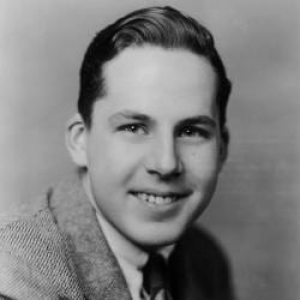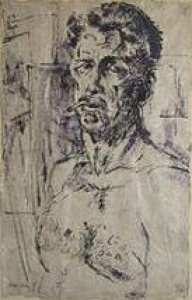

Biography
Francis Robert White began his art career with the study of stained glass. He continued to work in this medium for many decades, but he was also accomplished in easel painting and mural painting. Born in Oskaloosa, Iowa, White's early education was at the Pennsylvania Academy of Fine Arts, followed by special study in Rome and Paris. He learned the craft of stained glass at the Wyoming Valley Stained Glass Studios in Wilkes-Barre, Pennsylvania and received a Guggenheim Fellowship in 1930 to further his knowledge of this medium in Europe. Later studies included the Art Students League (with John Sloan and John Steuart Curry) and the Art Institute of Chicago. More significantly, he joined Grant Wood's Stone City Art Colony in 1932. But, within a year, he broke with Wood and moved to Cedar Rapids, Iowa, where he was joined by other artists who resented Wood's heavy-handed management style and his derision of their own artistic capabilities.White's Cooperative Mural Painters of Iowa achieved remarkable success. They out-competed Wood himself for a contract to decorate the Linn County Federal Courthouse in 1936. That work, subject to multiple paintings-over and restorations, can be seen today in the Cedar Rapids City Hall. Despite at one point leading an artists' boycott of the Iowa State Fair that sought fair pay for contributing artists, White won awards at the Fair's Art Salon for four consecutive years. He even became director of all WPA art projects in Iowa. He won commissions for three post office murals and completed private murals as well. Following World War II, White returned to working with stained glass, opening a studio in Chicago that prospered for three decades.


Critical Analysis
Grant Wood's dismissal of White involved his saying that White lacked the ability to paint murals. What he probably meant was that White disdained Wood's embrace of the American Scene and murals with exclusively bucolic themes. But, as White's murals for Algona and Missouri Valley show, he could paint bucolic scenes as well as anyone. And, working within the constraints of a Treasury Department contract, not to mention the financial exigencies of the Depression Era, he was willing to create such paintings. But, as evidenced by his role in the masterpiece in Cedar Rapids, he was more interested - and more energetic - in pursuing works of socialist realism. So his differences with Wood were probably more political than artistic in nature.Murals
- Algona, Iowa - Algona Public Library: Daily Bread
- Cedar Rapids, Iowa - City Hall: The Opening of the Midwest
- Missouri Valley, Iowa - Post Office: Iowa Fair
References
- biography of Francis Robert WHITE (1907-1986) (artprice.com).
- Bob White, Iowa, Self-Portrait, 1960 (Daniel Simhon Fine Art).
- Francis R. White (Guggenheim Foundation).
- Francis Robert White, The Des Moines Register August 22, p.24 (1986).
- Francis Robert White (When Tillage Begins: The Stone City Art Colony and School).
- Francis Robert White (Smithsonian American Art Museum).
- Francis Robert White (Modernism in the New City: Chicago Artists, 1920-1950). Biographical text by Lisa Meyerowitz for an art collection selected by Bernard Friedman.
- Breanne Robertson, Politics in Paint: The Creation, Destruction, and Restoration of the Cedar Rapids Federal Courthouse Mural, The Annals of Iowa Volume 74, Number 3: Summer, 2015, pp 263-313 (2015).
- Return from Work (Sioux City Art Center).